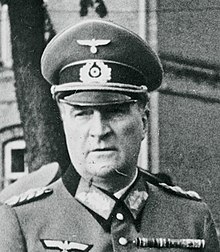
The 218th Infantry Division (218.Infanterie-Division) was an infantry division of the German Army that served in World War II.

The 197th Infantry Division was a Wehrmacht division in World War II. It was activated on 1 December 1939.

The 81st Infantry Division was an infantry division of the German Army during World War II. It was active from 1939 until 1945 and served primarily on the Eastern Front.
The 154th Infantry Division, also known as Commander of the Replacement Troops IV, Division No. 154, 154th Reserve Division, 154th Division and 154th Field Training Division was an infantry division of the German Heer during World War II.
The 159th Infantry Division was an infantry division of the German Heer during World War II. The unit, at times designated Commander of Reserve Troops IX, 159th Division, Division No. 159, and 159th Reserve Division, was active between 1939 and 1945.
The 166th Infantry Division was an infantry division of the German Heer during World War II. The unit, at times designated Commander of Reserve Troops 2 of Wehrkreis VI (
The 180th Infantry Division was an infantry division of the German Heer during World War II. The unit, at times designated Commander of Reserve Troops X/II, 180th Division, Division No. 180, and Operation Division No. 180, was active between 1939 and 1945.
The 182nd Infantry Division was an infantry division of the German Heer during World War II. The unit, at times designated Commander of Reserve Troops XII/II, 182nd Division, Division No. 182, 182nd Replacement Division, Division Nancy,Division Gümbel, Division Karl, and 182nd Reserve Division, was active between 1939 and 1945.
The 190th Infantry Division, initially known as Division No. 190, was an infantry division of the German Heer during World War II.
The 196th Infantry Division was an infantry division of the German Heer during World War II.
The 198th Infantry Division was an infantry division of the German Heer during World War II.
The 251st Infantry Division was an infantry division of the German Heer during World War II.
The 260th Infantry Division was an infantry division of the German Heer during World War II.
The 265th Infantry Division was an infantry division of the German Heer during World War II.
The 266th Infantry Division was an infantry division of the German Heer during World War II.

The 306th Infantry Division was an infantry division of the German Wehrmacht during World War II.
Infantry Division 309, also known as the 309th Infantry Division, Infantry Division "Berlin", and Infantry Division "Greater Berlin", was an infantry division of the German Wehrmacht during World War II.
The Infantry Division Hamburg was an infantry division of the German Heer during World War II. It was assigned the ordinal number 324, but was no longer known as the 324th Infantry Division after 10 March 1945. The division existed only in early March 1945.
The 416th Infantry Division was a German infantry division of World War II.
The 526th Infantry Division was an infantry division of the Heer, the ground forces of the German Wehrmacht, during World War II. Assembled in October 1939, it subsequently became the Division No. 526, also referred to in some Wehrmacht sources as the "526th Reserve Division". It existed until early 1945.
![Christoph Graf zu Stolberg-Stolberg [de], divisional commander of Division No. 160 between 1 July 1943 and 1 August 1943. In American captivity in 1945. WP Christoph Graf zu Stolberg-Stolberg.jpg](http://upload.wikimedia.org/wikipedia/commons/thumb/0/0f/WP_Christoph_Graf_zu_Stolberg-Stolberg.jpg/220px-WP_Christoph_Graf_zu_Stolberg-Stolberg.jpg)




